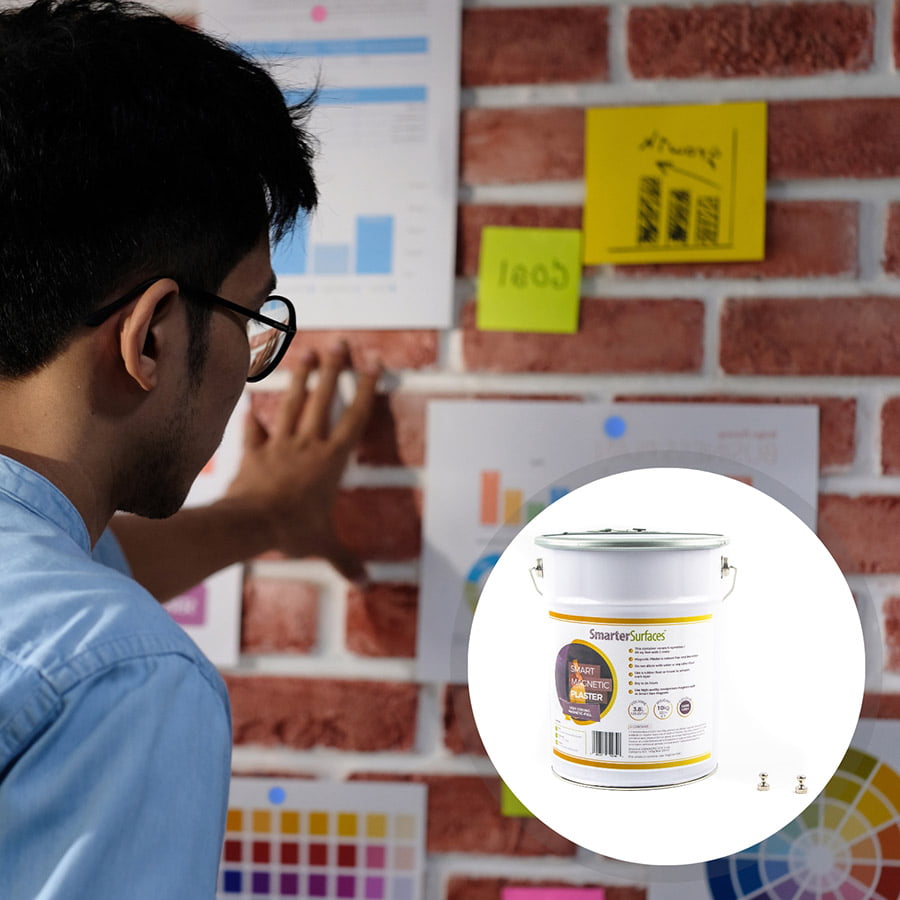How to Clean a Chalkboard: A Useful Guide
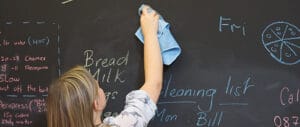
Table of Contents
- Introduction
- Why Chalkboard Cleaning Matters
- Everyday Chalkboard Cleaning Methods
- Deep Cleaning Methods for Chalkboards
- Cleaning Different Types of Chalkboards
- How to Prevent Chalkboard Ghosting
- Common Mistakes to Avoid
- Extra Tips for Maintaining a Chalkboard
- Eco-Friendly Cleaning Options
- Chalkboard Cleaning in Different Settings
- Key Takeaways
Chalkboards remain a timeless and practical tool for classrooms, offices, cafes, studios, and even modern homes. Whether used for teaching, planning, or creative expression, chalkboards provide a space where ideas come to life.
However, one common issue is that over time, chalk dust, residue, and ghosting (faint marks left behind after erasing) can make even the best chalkboard look messy and hard to read. To keep your chalkboard looking sharp and fully functional, regular cleaning and proper maintenance are essential.
This guide will walk you through the most effective methods for cleaning different types of chalkboards, from traditional slate to modern chalkboard paint and magnetic chalkboard walls. You’ll also learn about the right materials to use, common mistakes to avoid, and simple steps to extend the life of your chalkboard.
Why Cleaning Chalkboard Matters
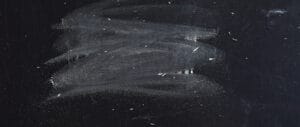
Chalkboards, whether used in classrooms, offices, cafes, or at home, are designed to be reusable and long-lasting. However, their performance and appearance heavily depend on proper care and maintenance.
While a quick wipe with a cloth or eraser may seem sufficient, this method often leaves behind fine chalk particles and residue. Over time, this buildup can cause dullness, ghosting, and reduced surface performance. Here's why regular and proper chalkboard cleaning truly matters:
- Improved Visibility: Clean surfaces provide better contrast, ensuring that text, diagrams, and artwork remain sharp and legible. This is especially important in professional and educational environments where clarity is critical.
- Extended Lifespan: Routine cleaning chalkboard helps prevent surface degradation, staining, and wear. This prolongs the usability of both traditional chalkboards and chalkboard paint walls, saving money on replacements or recoating.
- Professional Presentation: In customer-facing spaces like cafes, restaurants, or meeting rooms, a spotless chalkboard reflects attention to detail and enhances the overall visual appeal of your space.
- Enhanced Writing Experience: A well-maintained surface allows chalk to glide smoothly, reducing friction and dust. This improves ease of writing and minimizes mess.
Regular chalkboard cleaning is a small yet valuable maintenance habit. Investing just a few minutes into proper care ensures optimal performance, longevity, and appearance.
Everyday Chalkboard Cleaning Methods

Daily maintenance helps prevent chalk dust and residue from building up. These quick methods are ideal for light cleaning after each use.
1. Dry Erasing with a Chalk Board Eraser
- Use a high-quality felt eraser designed for chalkboards.
- Wipe the surface in a consistent, top-to-bottom motion.
- Tap or brush off the eraser regularly to remove built-up chalk dust.
This method is best for quick touch-ups during lessons or meetings, but won’t remove deeper ghosting.
2.Microfiber Cloth Wipe-Down
- Keep a soft, lint-free microfiber eraser cloth nearby.
- Gently wipe the board in circular motions to lift excess chalk.
- Shake the cloth outdoors to clear chalk particles before reusing.
Microfiber cloths are especially effective on painted chalkboard walls and magnetic chalkboards, where traditional erasers for chalkboards may leave streaks.
Deep Cleaning Methods for Chalkboards
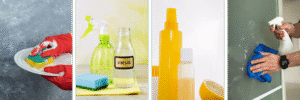
Even with daily care, chalkboards require deeper cleaning to restore their original finish. Depending on the condition of your board, try one of these proven methods.
1. Water and Sponge Cleaning
- Dampen a soft sponge or cloth with warm water.
- Wipe the entire board evenly, avoiding excessive soaking.
- Dry with a clean microfiber cloth to prevent streaks.
This simple method works well for weekly cleaning and is safe for most modern chalkboard surfaces.
2. Vinegar Solution
- Mix 1 cup of white vinegar with 4 cups of water.
- Dip a soft cloth or sponge into the solution and wring out excess liquid.
- Wipe the chalkboard thoroughly, then dry it with a towel.
The vinegar solution cuts through residue and ghosting, making it especially useful for older chalkboards or those with heavy use.
3. Lemon Oil Polish
- Apply a small amount of lemon oil to a clean cloth.
- Rub the cloth lightly across the chalkboard surface.
- Buff with a dry microfiber cloth.
Lemon oil not only cleans but also conditions the surface, giving it a darker, refreshed appearance. This is especially effective for slate chalkboards in cafes or restaurants where aesthetics matter.
4. Commercial Chalk Board Cleaner
If you prefer ready-made solutions, specialized chalkboard cleaners are available. They are formulated to tackle ghosting without damaging the surface. Always follow the product instructions and check compatibility with your chalkboard type.
<
Cleaning Different Types of Chalkboards
Not all chalkboards are created equal. The right cleaning method depends on the material and finish of your surface.
Traditional Slate Chalkboards
- Use a damp cloth or sponge with plain water for routine cleaning.
- Avoid harsh chemicals that may strip the surface.
- Condition the slate occasionally with lemon oil to maintain richness.
Painted Chalkboard Walls
- Wipe gently with microfiber cloths to avoid scratching.
- Use a vinegar solution or a blackboard cleaner for deeper cleaning.
- Recondition the surface every few months with a thin layer of chalk rubbed across and erased (called “seasoning”).
Magnetic Chalkboard Walls
- Clean with water or a vinegar solution, avoiding excess liquid that could seep into the wall.
- Use strong neodymium magnets instead of heavy or weak ones to reduce scratching.
Pair cleaning with light dusting of magnets themselves to prevent chalk transfer.
Chalkboard Stickers or Decals
- Use only a damp microfiber cloth; abrasive cleaners may damage the adhesive surface.
- Avoid excess water to prevent peeling.
How to Prevent Chalkboard Ghosting
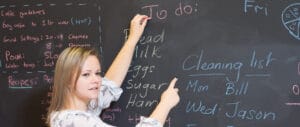
Ghosting is the faint shadow or residue left behind after erasing chalk. While common, it can be reduced or prevented with these tips:
- Prime the board before first use. Rub a stick of chalk lengthwise across the surface, then erase. This prevents the first layer of chalk from soaking into the material.
- Use high-quality chalk. Low-grade chalk contains oily binders that leave heavy residue. Opt for dustless chalk or premium chalkboard markers.
- Erase regularly. Don’t let writing sit on the board for too long, as chalk can stain when left overnight or longer.
Deep clean weekly. Prevent buildup by using a water or vinegar solution consistently.
Common Mistakes to Avoid
Cleaning a chalkboard may seem simple, but certain habits can cause long-term damage to your surface. Avoiding these simple mistakes ensures your chalkboard remains smooth, clear, and ready for everyday use. To keep your board in excellent condition, avoid these common mistakes:
- Excess water soaking: Applying too much water can cause chalkboard paint to weaken or warp wood-framed boards. Always use a lightly dampened cloth instead of soaking the surface.
- Using abrasive materials: Tools like steel wool, rough sponges, or even paper towels may scratch the board, leaving behind permanent marks that make writing uneven.
- Harsh chemical cleaners: Strong products such as ammonia, bleach, or heavy detergents can strip away the board’s finish and even cause discoloration over time.
- Neglecting eraser care: A chalk-dust-filled eraser doesn’t clean but redistributes residue. Brush or vacuum erasers regularly to keep them effective.
Extra Tips for Maintaining a Chalkboard
Keeping your chalkboard in top condition doesn’t just depend on cleaning; it’s also about regular care and mindful use. Here are some practical habits to follow:
- Store chalk properly: Always keep chalk sticks in a dry, sealed container. This helps prevent them from crumbling and producing unnecessary dust.
- Choose the right erasers: Invest in high-quality felt erasers or reusable microfiber cloths. They remove chalk more effectively and reduce streaks compared to cheap alternatives.
- Season your chalkboard: For painted or newly installed chalkboards, rub the side of a chalk stick across the entire surface and then erase. This conditioning step reduces ghosting and staining.
- Use magnets with care: If your chalkboard is magnetic, avoid rough or low-quality magnets that can scratch the surface. Opt for smooth, durable options to protect your board’s finish.
Eco-Friendly Cleaning Options
If you want to avoid harsh chemicals in your cleaning routine, there are plenty of eco-friendly ways to keep your chalkboard in top condition. Start with plain water, a safe, effective, and sustainable choice for everyday cleaning.
For tougher residue, use a vinegar solution, which works as a natural disinfectant and cuts through chalk buildup with ease. Lemon oil is another excellent option; it not only cleans but also conditions the board, keeping it smooth for writing. These natural alternatives are gentle on surfaces and safe for classrooms, homes, offices, and any space used by children or adults.
Chalkboard Cleaning in Different Settings
Classrooms
Daily erasing and weekly deep cleaning are essential to keep lessons clear. Encourage students to use microfiber cloths instead of paper towels for eco-friendly maintenance.
Offices
In meeting rooms or collaborative spaces, clean chalkboard after every brainstorming session to keep ideas fresh and avoid distractions from old marks.
Cafes and Restaurants
Menus and specials should always be legible. Wipe down boards daily and consider lemon oil polish for a professional, polished look.
Homes
For family planners or kids’ creative boards, keep cleaning supplies nearby. Encourage children to help wipe down the board as part of tidying up.
Key Takeaways
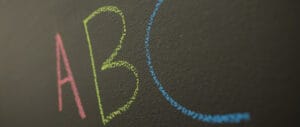
A well-maintained chalkboard is more than just a functional writing surface; it’s a tool that encourages creativity, communication, and organization. By following proper cleaning methods, choosing the right materials, and adopting preventive care practices, you can keep your chalkboard looking sharp and easy to use every day.
Whether you’re using it in a classroom, office, cafe, or at home, the key lies in consistency: light daily dusting, deeper weekly cleaning, and occasional conditioning. These small but regular steps will save you from bigger maintenance issues later.
Remember, not all chalkboards are the same; traditional slate, painted chalkboard walls, and modern magnetic chalkboards may each have unique care needs. By tailoring your approach to the type of surface you own, you’ll get the best long-term results.
With just a little effort, your chalkboard will remain a clean, professional, and engaging space, ready to capture ideas, plans, or even playful doodles whenever you need it.


